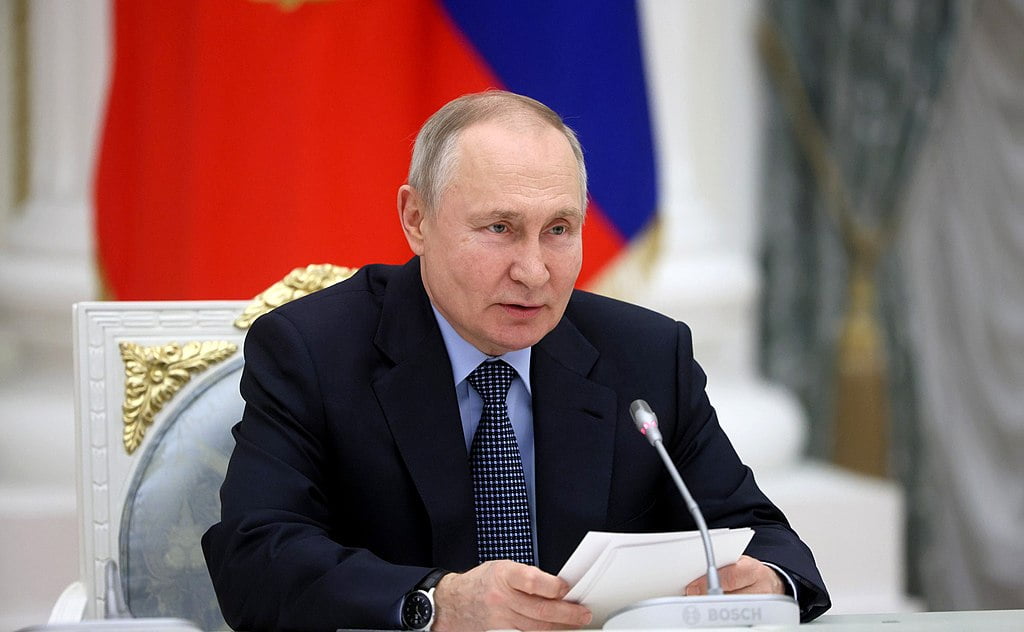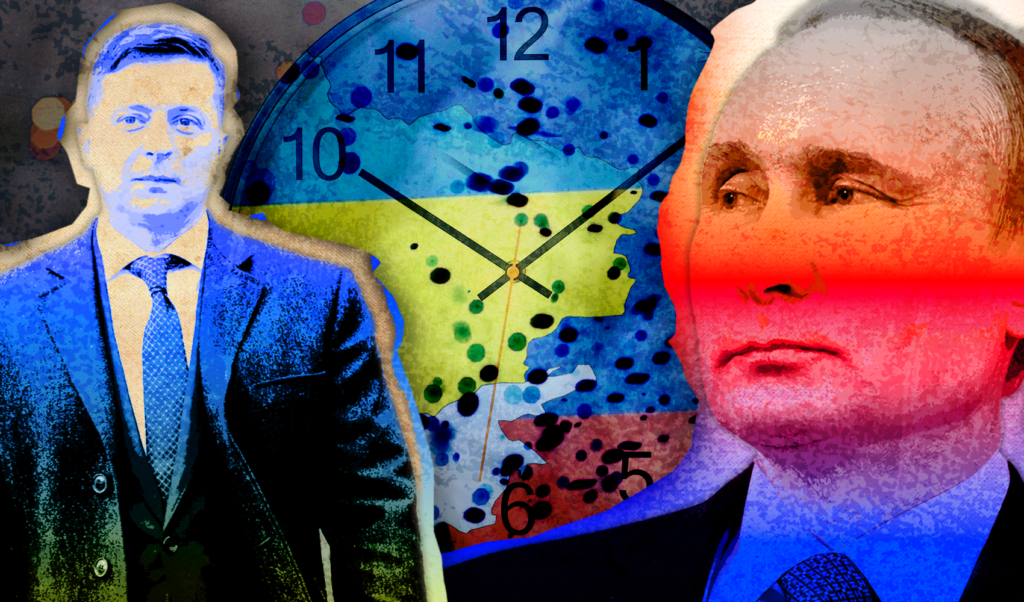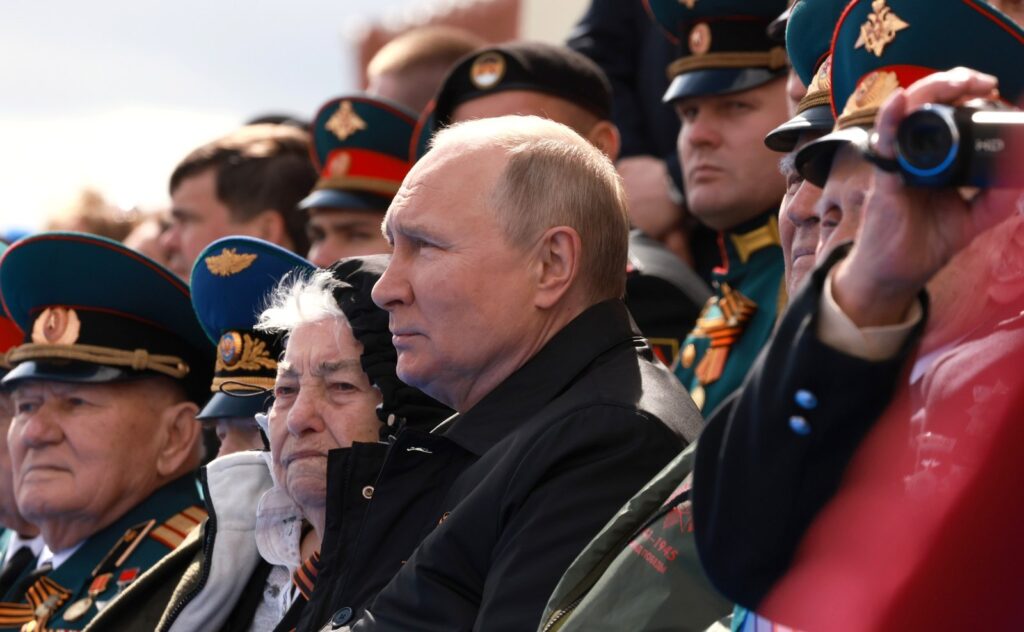Drones fighting drones in Ukraine heralds a new era of warfare.
 A Russian Orlan drone shot down over Donetsk. Russia’s drone tactics were vastly improved with the arrival of Iranian drones. : State Border Guard Service of Ukraine CCBY4.0
A Russian Orlan drone shot down over Donetsk. Russia’s drone tactics were vastly improved with the arrival of Iranian drones. : State Border Guard Service of Ukraine CCBY4.0
Drones fighting drones in Ukraine heralds a new era of warfare.
There is a new kind of war being fought in the skies above Ukraine. Drones are engaging in dog-fights as the country battles Russia.
In October, Ukraine looked to have won the first drone-on-drone dogfight caught on film when two unarmed DJI Mavic quadcopters clashed rotors. The Russian drone was destroyed.
WW1-style duel. Ukrainan Mavic-drone, which we have delivered to one of the airborne units in Donetsk region, destroyes russian opponent. Amazing!
Pls support our Armed Forces: https://t.co/nw19NpRIN6 pic.twitter.com/2vaCBQINQK— Serhiy Prytula (@serhiyprytula) October 13, 2022
Some claimed it as the first drone dogfight in history. With war tech constantly evolving, it most certainly will not be the last. PlayStation-style warfare is here to stay.
The days of unmanned, AI-controlled fighter jets duelling in the skies are surely the future of such warfare. Drones also alter the rules of engagement as they inhabit a grey area: shooting down a drone is different to shooting down a manned surveillance plane, for instance.
Drones have been increasingly deployed by both sides since Russia launched its invasion of Ukraine a year ago. The Chinese-made Mavics have been used primarily for surveillance. Ukraine, meanwhile, has used the Turkish TB2 Bayraktar to devastating effect while also destroying several Russian surface-to-air missile systems, along with infantry and armoured vehicles.
Until it bought several thousand from Iran, Russia had not relied on drones as much. Russian surveillance drones such as the Eleron-3 and the Orlan-10 were destroyed by Ukrainian electronic warfare systems.
Moscow’s few advanced drones, such as its Inokhodets combat drone, have had mediocre results. Its indigenous Zala KYB drones, capable of carrying a 3kg explosive payload and hitting targets from 40km – appear to have a high failure rate. Russia also has the LANCET-3, commonly referred to as the “flying Kalashnikov” and the KUBBLA drone, both of which are classified as suicide drones.
The acquisition of kamikaze drones from Iran changed the complexion of the drone battle.
The Shahed-136 is a 3.5m-long drone similar to a cruise missile. Its average range is around 2000km. The Shahed-131 is smaller and cheaper and is used for short-range attacks, especially against air defence systems, warehouses, fuel reserves, military bases, convoys and warships. Russia conducted more than 100 operations using these drones in Odessa, Mykolaiv and Dnipropetrovsk, and most were successful.
The attraction of these drones is their price: Iranian drones are very cheap and efficient. At around USD$20,000-$30,000 per drone, they are far less costly than the missiles Ukraine is forced to use to destroy them — around USD$1 million per unit. They’re also far less expensive than any of the missiles and rockets in Russia’s existing arsenal, most of which cost around USD$2 million each.
The Shahed 136 and 131 have another attribute less obvious to anyone other than those it targets.
“The disgusting sound of Iranian drones is heard in our skies every night,” Ukrainian President Voldymyr Zelenskiy said in October. The crazy noise of these kamikaze drones — like a roaring motorcycle — has a psychological effect on anyone in the target’s vicinity.
How drones will influence the eventual outcome of the war in Ukraine is uncertain. What is widely believed is that the longer the war lasts, the more likely it becomes that drones will be used to identify, select and attack targets without help from humans, leading to a new age of robot warfare.
Mohammad Eslami is a research fellow of the Arms Control Negotiation Academy at the Davis Center for Russian and Eurasian Studies at Harvard University. He is also a researcher at the Research Centre for Political Science (CICP) at the University of Minho in Portugal. His research interests primarily relate to International Security, Arms control, Nuclear Proliferation, and Middle East Studies. He has published in International Affairs, Third World Quarterly, Journal for Peace and Disarmament, and Spanish Journal of Political Science.
Originally published under Creative Commons by 360info™.











